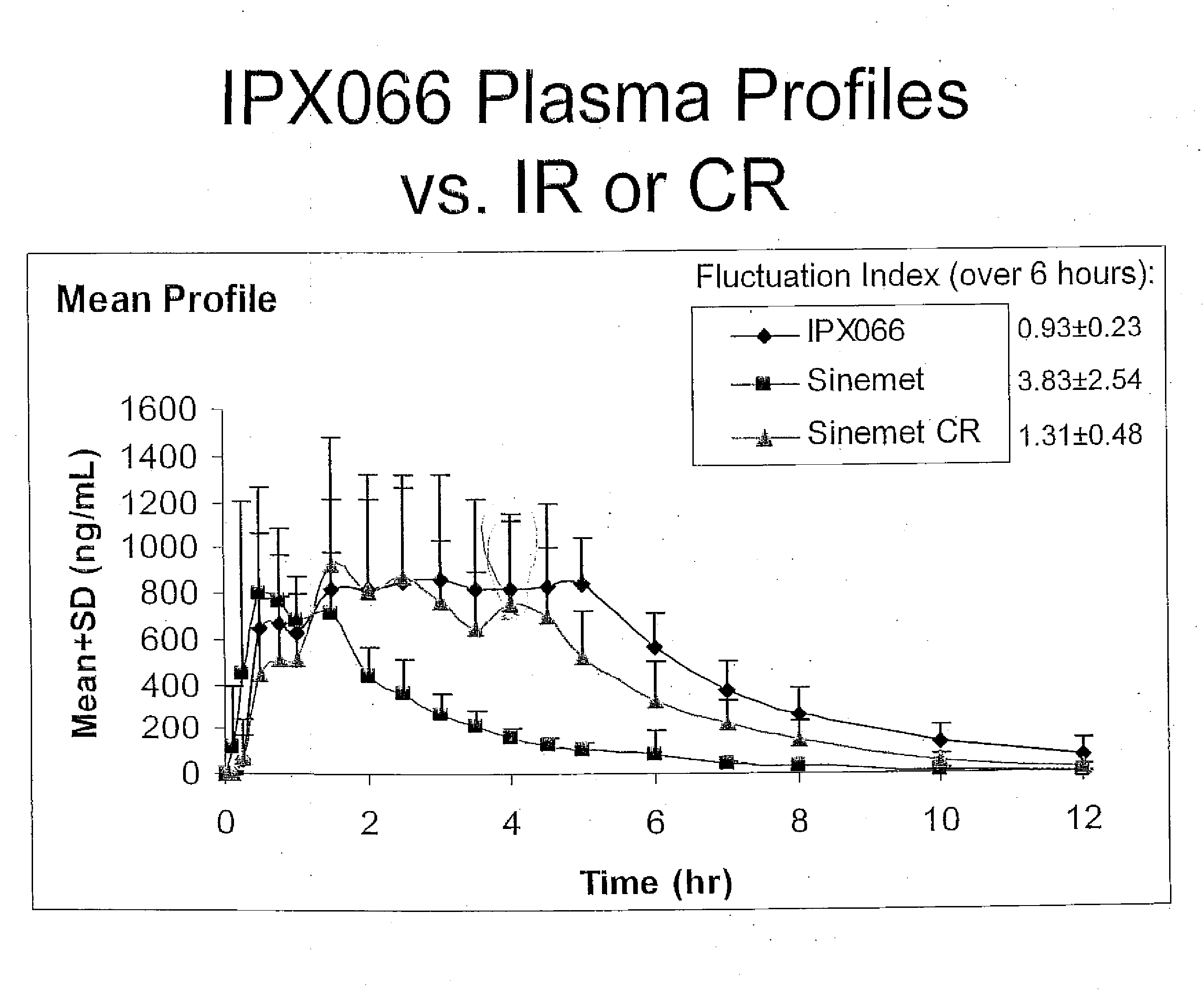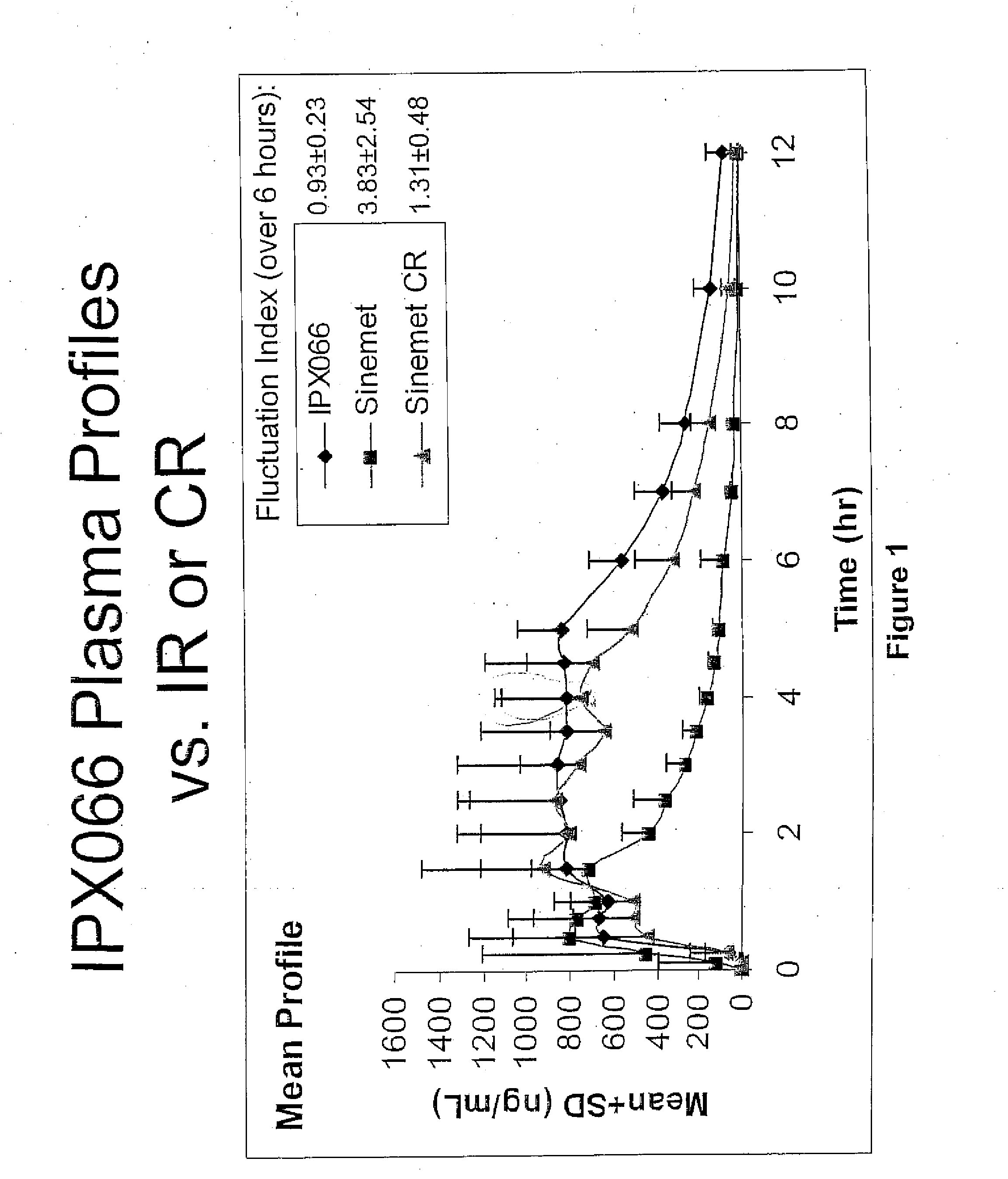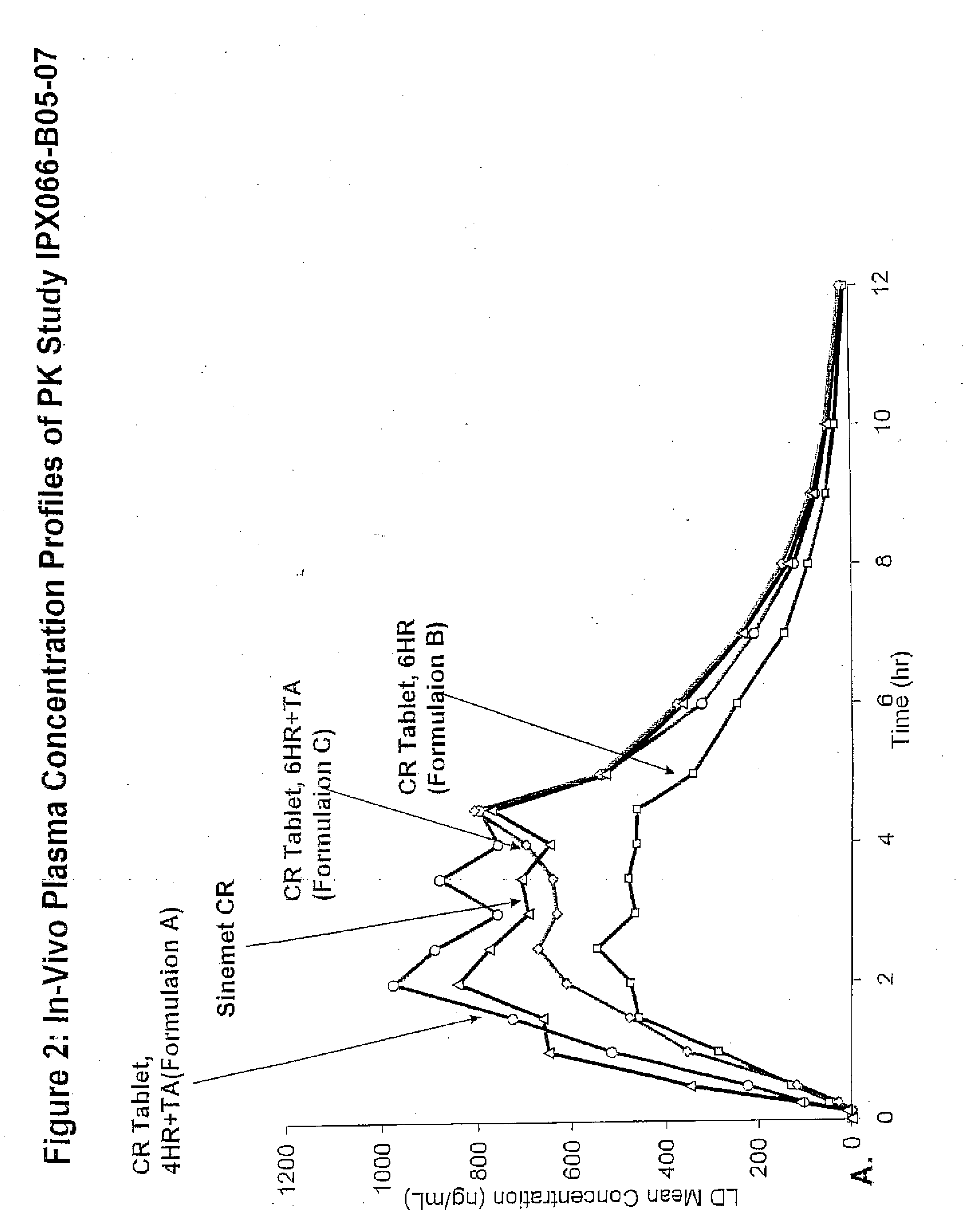Controlled release formulations of levodopa and uses thereof
a technology of levodopa and controlled release, which is applied in the direction of drug compositions, microcapsules, medical preparations, etc., can solve the problems of inability to move, inability to effectively treat parkinson's disease with dopamine, and difficult to achieve the effect of reducing motor fluctuations or “on-off” effects, and superior plasma ld profiles
- Summary
- Abstract
- Description
- Claims
- Application Information
AI Technical Summary
Benefits of technology
Problems solved by technology
Method used
Image
Examples
example 1
A Tablet of Carbidopa and Levodopa with Tartaric Acid
[0091]The bioavailability / pharmacokinetic results of a tablet formulation of the present invention, using 50-200 mg of CD-LD with 215 mg of tartaric acid, were compared to the controlled release version of Sinemet®.
Preparation of a Tablet of CD-LD with Tartaric Acid (IPX066-B05-07)
[0092]CD, LD, and hydroxypropyl were charged into a blender and mixed uniformly. The powder mix was then charged in a high shear granulator and granulated with purified water. Drying of the granules was done overnight in an oven at 60±10° C. Dried granules were passed through a 25 mesh screen, then charged and blended with magnesium stearate in a blender.
[0093]To prepare the tartaric acid final blend, granular tartaric acid was passed through a 20 mesh screen. The tartaric acid, microcrystalline cellulose, and hypromellose were charged and blended in a high shear mixer and granulated with ethyl alcohol. The resultant granules were dried in fluid bed proc...
example 2
Preparation of IPX066-B06-02 Formulations A and B
[0106]The following steps were performed to prepare enteric coated pellets containing CD and LD.
[0107]CD, LD, and microcrystalline cellulose (Avicel PH-101) were charged and mixed uniformly. The powder mix was charged into a high shear granulator and granulated with purified water. The granulated wet mass was extruded in an extruder with 1.0 mm hole size screen. The extrudate was charged and spheronized in a spheronizer equipped with 3 min cross-hatch disc. The CD / LD pellets were dried at 60±10° C. in fluid bed processor. The CD / LD pellets were passed through different size screens. The pellets collected were retained on 18 and 25 mesh screens.
[0108]The following steps were performed to prepare the enteric coating solution for the CD-LD pellets.
[0109]For Formulation IPX066-B06-02 A, Eudragit® S100 and Eudragit® L100 (at the weight ratio of 2:1) and triethyl citrate were dissolved in isopropyl alcohol and acetone solution. The mixture ...
example 3
Preparation of IPX066-B07-01 Formulations A, B and C
[0142]The following steps were performed to prepare enteric coated pellets containing Carbidopa-Levodopa (CD-LD).
[0143]CD, LD, and microcrystalline cellulose (Avicel PH-101) were blended together. The mixture was charged into a high shear granulator and granulated with purified water. The granulated wet mass was extruded in an extruder with 1.0 mm hole size screen. The extrudate was charged and spheronized in a spheronizer equipped with 3 mm cross-hatch disc. The spheres obtained from the spheronizer were dried at 60±10° C. in a Glatt GPCG-1 coater. Drying the pellets in the Glatt GPCG-1 eliminated discoloration of the pellets and also reduced the amount of degradation product DHP. The thug-loaded pellets were screened with 16, 18 and 25 mesh screens and the collected pellets retained on 18 and 25 mesh screens. The core pellets were then coated with hypromellose (Pharmacoat 606) aqueous solution in a Glatt GPCG-1 coater. The coated...
PUM
| Property | Measurement | Unit |
|---|---|---|
| of time | aaaaa | aaaaa |
| concentration | aaaaa | aaaaa |
| concentration | aaaaa | aaaaa |
Abstract
Description
Claims
Application Information
 Login to View More
Login to View More - R&D
- Intellectual Property
- Life Sciences
- Materials
- Tech Scout
- Unparalleled Data Quality
- Higher Quality Content
- 60% Fewer Hallucinations
Browse by: Latest US Patents, China's latest patents, Technical Efficacy Thesaurus, Application Domain, Technology Topic, Popular Technical Reports.
© 2025 PatSnap. All rights reserved.Legal|Privacy policy|Modern Slavery Act Transparency Statement|Sitemap|About US| Contact US: help@patsnap.com



